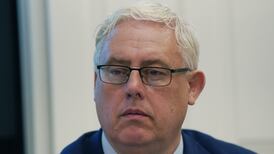Britain’s inflation rate increased less than economists and the Bank of England had expected, prompting traders to step up bets on a further loosening in interest rates.
The UK Consumer Prices Index rose 2.2 per cent in July after a 2 per cent gain in each of the two previous months, the Office for National Statistics said on Wednesday. Economists had expected a reading of 2.3 per cent, and the BOE was forecasting 2.4 per cent.
While it was the first increase in headline inflation this year, a sharp cooling in services and core price growth also may ease concerns for policy makers that inflationary forces are still lingering. The pound fell, and investors fully priced in two quarter-point rate cuts this year.
“A dovish turn” in inflation data “should provide a degree of comfort for MPC members as the Bank’s own forecasts earlier this month pointed to a sharper uptick,” said Yael Selfin, chief economist at KPMG UK.
Missing out on Help to Buy because developer is not on Revenue list
‘The Portuguese are very like the Irish in many ways’: the Tipperary man in charge of Denis O’Brien’s luxury Algarve resort
Tesla shares hurt by political backlash and bursting of the ‘bro bubble’
Rising premiums a poor prognosis for health insurance customers
Traders added to bets on interest-rate cuts from the BOE, fully pricing two more quarter-point reductions by the end of the year. The pound fell as much as 0.3 per cent to $1.2820, but is still the best performing Group-of-10 currency this year, largely due to bets the BOE will keep rates relatively high.
Services inflation — which BOE officials are watching closely for signs of domestic price pressures — cooled to 5.2 per cent from 5.7 per cent, the lowest reading in more than two years and below the 5.6 per cent the BOE was forecasting. Core inflation, excluding food and tobacco prices, hit its lowest since September 2021.
Britain took longer to rein in inflation than other Group of Seven economies, but the latest readings show it’s in better shape than the euro area and comparable to the US harmonized rate.
BOE Governor Andrew Bailey has cautioned against reducing borrowing costs “too much or too quickly,” prompting traders to bet on the next move being delayed until November. But they’re growing more confident of a move by then and also in December.
While headline inflation in the UK hit the BOE’s 2 per cent target in May and June, the BOE expects it to pick up to almost 3 per cent later this year before cooling again in 2025. The resurgence in July was largely driven by sharp declines in energy bills last year falling out of the annual calculations.
The ONS said that prices in restaurants and hotel were the largest drag on the figures, helping to pull down services inflation.
The figures suggested that a temporary “Taylor Swift” effect unwound after her Eras tour left Britain. Hotel and live music prices helped to pull down services inflation after being sources of strength the previous month. Air fares and package holidays also helped to drive down price growth in the UK’s largest sector.
The rate-setters are concerned that stubbornly high services inflation and wage growth will make it more difficult to achieve its aim sustainably. However, the BOE has played down the significance of the recent strength in services prices, blaming volatile components.
The inflation figures come midway through a week of top-tier data that threaten to complicate the BOE’s shift toward lower interest rates.
On Tuesday, there were signs of resilience in the labor market with unemployment unexpectedly dropping in the three months to June after a hiring spurt by businesses. However, wage growth and job vacancies eased further.
Tomorrow, gross domestic product data are expected to show that growth continued at a healthy clip in the second quarter, extending a recovery from last year’s recession. The central bank has warned that the strength of the economy adds to the inflation risks. --Bloomberg















